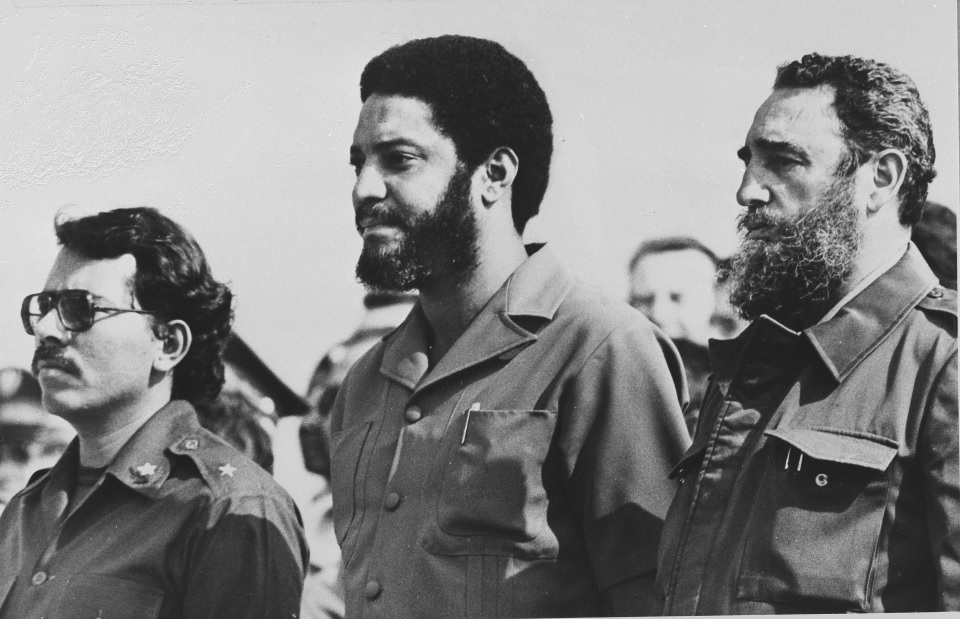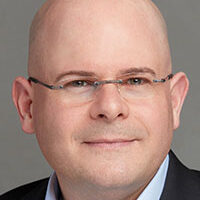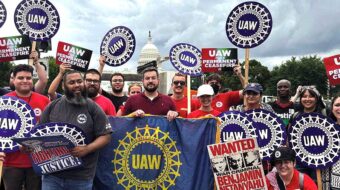
The nation of Grenada will commemorate the 40th anniversary of the tragic assassination of its revolutionary hero, Maurice Bishop, on Oct. 19. The government has declared the date a public holiday now known as National Heroes Day.
On that day in 1983, Bishop and seven others were murdered by a firing squad, leading to the collapse of the People’s Revolutionary Government (PRG) and paving the way for an invasion by the United States of America.
Known for its spice and tourism industries, the small Caribbean nation had embarked on a socialist revolution four years earlier that was admired around the world.
The revolution was led by Bishop, the charismatic and principled leader of the New Jewel Movement (NJM), a Marxist-Leninist party inspired by the Cuban Revolution. It also was influenced by the Black Power movement in the U.S., embraced Pan-Africanism, and espoused what scholars today term “Black Internationalism.”
During the 1970s, the NJM formulated its political program, organized workers and farmers, and prepared for potential military combat. The party advocated for democracy, education, and economic development.

After Grenada won its independence from the United Kingdom in 1974, the new nation was ruled by the corrupt, brutal, and erratic dictator Eric Gairy. His regime repeatedly arrested and jailed activists such as Bishop, a young lawyer and labor activist who was elected to parliament in 1976 and served as leader of the opposition.
On March 13, 1979, while Gairy was attending a United Nations meeting in New York, Bishop and his comrades led a bloodless, popular revolution on the island.
The PRG was established, and Bishop was appointed Prime Minister. It implemented a radical program of land reforms, worker’s rights, equal pay and maternity leave for women, free health care, adult literacy, and housing repair and construction. Grenada also proclaimed its support for the anti-apartheid struggle in South Africa and provided assistance to the African National Congress.
Not surprisingly, diplomatic relations with Cuba were quickly established. Indeed, at the 1980 May Day rally in Havana, Bishop affirmed: “We recognized in Grenada just as the imperialists recognize, that without the Cuban Revolution of 1959, there could have been no Grenadian Revolution.”
Havana provided scholarships for Grenadian students to study medicine in Cuba while Cuban internationalists were sent to support the health care, education, and agriculture initiatives of the PRG.
Hoping to boost revenues from tourism, the PRG started construction of a new international airport at Port Salines, on the southern tip of the island. The short runway of the existing Pearls Airport in northeast Grenada was unable to accommodate long-range jets that could fly from North America and Europe. Construction brigades from Cuba, numbering about 800 workers and engineers, arrived on the island to expedite the plan. The Cubans labored alongside a multinational workforce.
Meanwhile, behind the scenes, a faction in the PRG led by Bernard Coard, the Deputy Prime Minister, plotted against Bishop. Coard’s followers viewed him as the “theoretician” of the revolution and claimed Bishop was insufficiently ideological and disciplined. “Hyenas” is how Fidel Castro later characterized Coard’s gang.
Despite the slanders and scheming of the Coard clique, admiration and respect for Bishop were widespread, not only on the island but globally, and Grenadians were proud of their revolutionary leader. He was a captivating speaker who motivated listeners to create a new society, fight against injustice, and stand in solidarity with oppressed peoples around the world.
When Bishop traveled to Hungary and Czechoslovakia for an official visit in early October 1983, Coard’s gang finalized their plot against Bishop. Upon his return to Grenada, Bishop rejected their demand that he agree to “joint leadership” with Coard. Bishop was swiftly placed under house arrest, and the Coard faction delusionally believed they had prevailed.
Once they heard their leader had been detained, thousands of people in St. George’s, the capital of Grenada, took to the streets and then freed Bishop. As Bishop and his supporters marched to an impromptu mass rally at Market Square, in the city center, a confrontation with soldiers ensued. During the mayhem, Bishop was seized and, along with four cabinet members and three others, executed by Coard’s men. Bishop was only 39 years old.
In Washington, the administration of Ronald Reagan snatched the opportunity to attack Grenada. The U.S. government had been openly hostile to the PRG from the start, as it rebuffed all attempts by Grenada to establish friendly relations and consistently spread bogus information about the revolution. Most famously, the Reagan administration falsely alleged that the Cuban construction workers at the Port Salines airport site were building runways long enough to allow military aircraft from the Soviet Union to land.
In the upheaval following Bishop’s murder, the Reagan administration claimed it had a responsibility to “rescue” about 600 American medical students at St. George’s University. On Oct. 25, the U.S. launched “Operation Urgent Fury” and invaded Grenada. In a speech to the American people during the short war, Reagan claimed that Grenada had become a “Soviet-Cuban colony” that would “export terror and undermine democracy.”

Bishop always knew the danger the U.S. represented to the Grenadian Revolution. On the other side of the Caribbean, Washington had created, funded, and armed the “contras” to destabilize the Sandinista Revolution of 1979 in Nicaragua. And only a decade earlier, on Sept. 11, 1973, the U.S. had orchestrated a violent coup against Chile’s democratically-elected socialist leader, Salvador Allende.
During a speech at New York’s Hunter College—on June 5, 1983, only a few months before his murder—Bishop revealed that a secret report from the U.S. Department of State observed that the Grenadian Revolution was “even worse” than the revolutions in Cuba and Nicaragua for two reasons: Grenadians spoke English and they were Black.
In other words, the Reagan administration feared that the PRG leadership could more effectively communicate with African Americans who would easily identify with the Grenadian revolutionaries. “Now that aspect of the report,” Bishop noted, “clearly is one of the most sensible.”
In that celebrated speech, Bishop expressed solidarity with the African National Congress and the Palestine Liberation Organization and praised Cuba for its defense of newly independent Angola against the army of apartheid South Africa. He also criticized the hypocrisy of the U.S., declaring: “The more desperate that imperialism gets, the more it comes up with the most vulgar and hostile measures to try to keep the poor oppressed people of the world, who are trying to win their national liberation and to build their own future, down.”
Though the U.S. invasion comprised over 7,000 troops, an aircraft carrier, battleships, fighter jets, helicopter gunships, and tanks, it initially faced determined resistance from the vastly outnumbered and underequipped People’s Revolutionary Army. In the ensuing battles, 45 Grenadians, 24 Cubans, and 19 Americans lost their lives.
The American occupation forces arrested Coard and his wife Phyllis, who had also served as a minister in the PRG and participated in the plot against Bishop. After all that futile conspiring and bloodshed, the “Revolutionary Military Council” that was established after Bishop’s assassination had lasted only six days, and the Grenadian Revolution was vanquished.
In 1986, Coard and his accomplices, known as the “Grenada 17,” were sentenced to death for ordering the murder of Bishop and the seven others. Coard’s sentence was commuted to life imprisonment in 1991, then he was re-sentenced to 30 years in 2007, and he was released in September 2009. Coard now lives in Jamaica, busily writing books that desperately attempt to present his version of those disastrous events four decades ago. His wife, Phyllis, died in 2020.
In a recent investigative book, The Assassination of Maurice Bishop, Belizean politician Godfrey Smith rightly concludes: “It is Bernard Coard who must bear ultimate responsibility for the assassination of Maurice Bishop and the destruction of the Grenada Revolution.”
Today, passenger jets carrying tourists from North America and Europe land at the airport at Port Salines that the Americans misleadingly claimed was being built for Soviet warplanes. In August 1998, on a state visit to Grenada, Fidel Castro unveiled a plaque at the airport honoring the Cuban construction workers killed during the U.S. invasion. The names and photographs of those Cuban martyrs are arranged in a semicircle on a small hill overlooking another memorial to the American soldiers who died in the invasion. The airport was renamed Maurice Bishop International Airport in 2009.
Despite the U.S. invasion and the collapse of the PRG, Grenada’s relations with Cuba remain close. At present, there are about 40 Cuban doctors working at the General Hospital in St. George’s and eight engineers in Grenada’s Ministry of Infrastructure. Cuba offers more than ten scholarships annually for Grenadians to study in Cuba, mainly in the health sector. Over the years, nearly 400 Grenadians have graduated from Cuban higher education institutions.
Across the island, Cuban medical workers and Grenadian graduates of Cuban medical schools provide health care. Additionally, many Grenadians receive free medical care in Cuba every year. Several Cuban restaurants and bakeries in Grenada are testament to the strong, multifaceted ties between the two nations.
At a ceremony celebrating the 44th anniversary of bilateral relations in April, Luis Ernesto Morejón Rodríguez, the Cuban ambassador to Grenada, highlighted Grenada’s support for Cuba: “We appreciate the solidarity that we have always received from Grenada in our struggle to achieve justice for our people and in the rejection of the economic, commercial, and financial blockade of the United States, which is intended to suffocate the Cuban people.”
At the same event, Grenada’s Prime Minister Dickon Mitchell stated: “In our times of need, we know that we can count on Cuba.” He cited as examples the Cuban health brigades sent to Grenada after Hurricane Ivan in 2004 and, more recently, during the global COVID-19 pandemic.
Mitchell also asserted: “We remember the 24 Cuban workers who lost their lives during the U.S. invasion in 1983. Their sacrifice and bravery will always be a reminder of the deep ties between our people. These 24 brave men were not just defending themselves, but the ideals of our people and the sanctity of our bond.”

Last month, the government of Grenada announced that Oct. 19 would be proclaimed a public holiday, a day to reflect on and honor Grenada’s heroes. A national church service will be held in the morning at the Kirani James Athletic Stadium while a candlelight vigil will take place on the Carenage, St. George’s waterfront, in the evening.
Historian John Angus Martin, author of the book A to Z of Grenada Heritage, argues that the public holiday was long overdue. “The majority of Grenadians felt there should be more recognition for what happened to Maurice Bishop and the others. This holiday allows Grenadians to heal in a way and move beyond the mourning to celebrate people’s lives.”
Over the past four decades, the families and friends of the victims of Oct. 19 had been calling for the day to be declared a national holiday and a day for sober reflection, according to Dr. Terence Marryshow, former leader of the Maurice Bishop Patriotic Movement and current head of the Grenada-Cuba Friendship Association. Prime Minister Mitchell’s government has answered that call and also mandated that students are taught more local history in the schools.
While young Grenadians might be unfamiliar with Grenada’s recent history, Marryshow asserts that many older people fondly recall the revolutionary era. “They long for the ‘good old days’ when they truly benefitted from the programs of the revolution and when they got the opportunity to participate in the various activities which uplifted them, whether it was the literacy program, receiving training as part of the militia, doing voluntary work on afternoons after work and on weekends, or attending activities to listen to Bishop, among others.”
National Heroes Day will provide some closure to the families and friends of the victims of Oct. 19, but there are still many unanswered questions about that infamous day in 1983. Bishop’s body was burned by his assassins, for example, and its location remains a mystery.
Despite the tragedy that marks Oct. 19, the Grenadian Revolution remains an inspiration. Marryshow explains: “The legacy of the People’s Revolutionary Government is rooted in the fact that a small country like Grenada was able to achieve unprecedented development in four and a half years with a hostile U.S. breathing down our neck.” As importantly, he reminds us: “The Revolution had a particular appeal for Black people the world over fighting for their liberation.”
We hope you appreciated this article. At People’s World, we believe news and information should be free and accessible to all, but we need your help. Our journalism is free of corporate influence and paywalls because we are totally reader-supported. Only you, our readers and supporters, make this possible. If you enjoy reading People’s World and the stories we bring you, please support our work by donating or becoming a monthly sustainer today. Thank you!












Comments